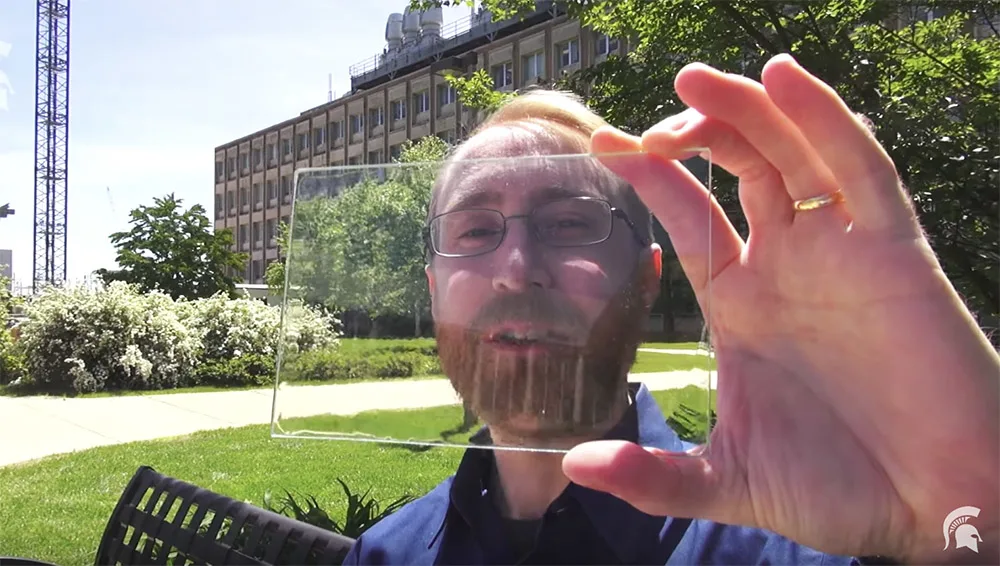Let’s face it: as much as we love solar energy, the solar panels most of us are used to seeing can be bulky, unsightly, and downright inconvenient. We won’t hold that against them too much; solar energy is good no matter what the source. But imagine if your windows – your clear, glass windows on your home – could collect energy from the sun during the day and power your home 24/7. That sounds pretty amazing, right? Well, researchers at Michigan State University are making transparent solar panels a reality.

Michigan State University | YouTube
As a child growing up in Boston, Richard Lunt, professor of chemical engineering and materials science at Michigan State, took notice of the vast vertical footprint available on most buildings. Most of that vertical footprint is glass. What if all that glass could convert the sun into energy? Using that footprint to maximize the sun’s energy potential became Lunt’s goal, and it could truly change the future of energy.
How transparent solar panels work
Transparent solar panels, called a transparent luminescent solar concentrators, look like clear panes of glass. The glass captures the parts of the solar spectrum we can’t see with our eyes – the infrared and ultraviolet light. This light is guided to the edges of the glass panels, where thin solar cells are installed to capture the energy. The energy is then converted to electricity.
Called a transparent luminescent solar concentrator, the panel uses organic molecules made to absorb invisible wavelengths of light, such as ultraviolet and near infrared light. The material moves this unseen light to the edges of the panel, where strips of photovoltaic solar cells pick it up and convert it to electricity. – Tech Times
Imagine whole cities utilizing this technology. Transparent panels can be incorporated into all types of buildings – new and old – without changing the appearance of the building. Entire skyscrapers could be powered by their windows. And transparent solar panels could have many smaller applications as well. Think billboards and car windows. How about smartphone and tablet screens? The possibilities are endless, and exciting. Solar farms could become solar cities, utilizing an infrastructure that already exists.
It opens a lot of area to deploy solar energy in a non-intrusive way. It can be used on tall buildings with lots of windows or any kind of mobile device that demands high aesthetic quality like a phone or e-reader. Ultimately we want to make solar harvesting surfaces that you do not even know are there. – Richard Lunt
See the video below to hear an interview with Richard Lunt, and to view prototypes of the solar concentrators in action. Obviously, a lot more work needs to be done before these are commercially available, but it will be exciting to see more of this technology in action. We’ll be watching for updates!
Via Michigan State University and Tech Times
